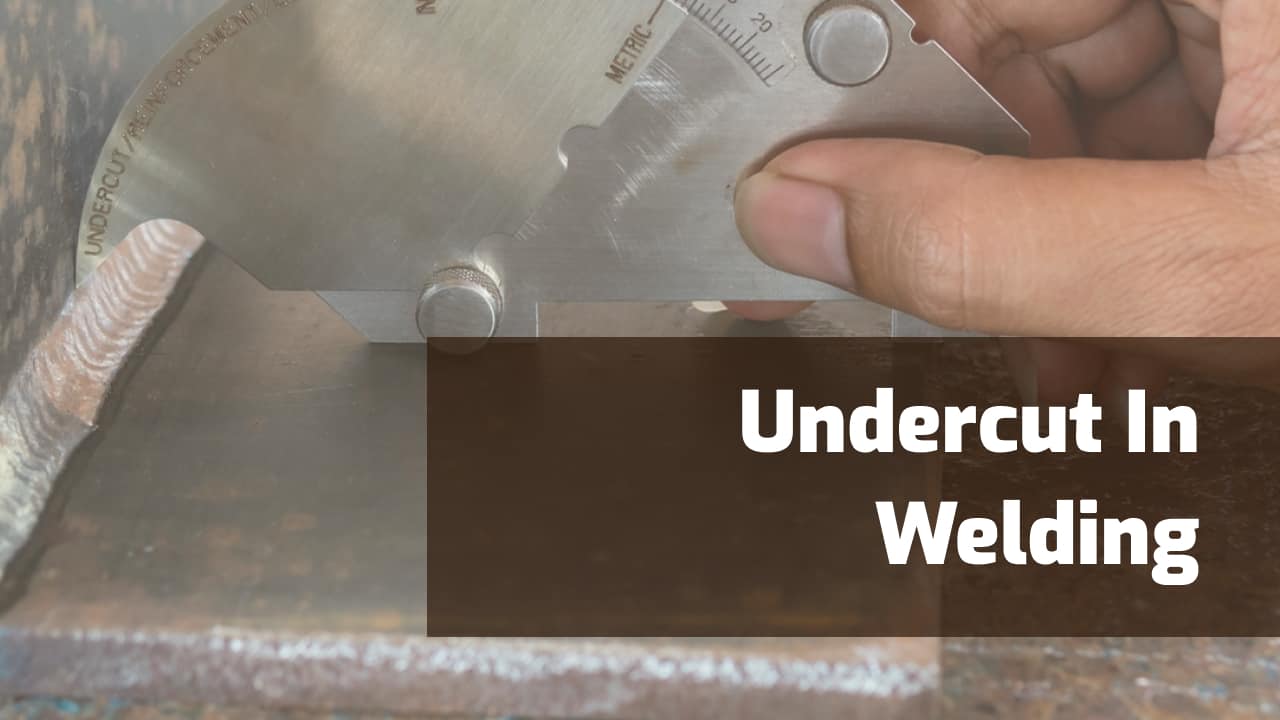A Comprehensive Overview to Identifying, Preventing, and Repairing Undercut Welding Problems in Your Welding Jobs
In the realm of welding, encountering undercut concerns is an usual obstacle that can jeopardize the architectural honesty and total quality of your welding tasks. Recognizing the root triggers behind undercut welding, being able to properly identify it in your welds, and executing effective preventative procedures are critical skills for any kind of welder. In addition, having the understanding and strategies to rectify undercut problems when they do take place can make a considerable difference in the last result of your welding endeavors. Remain tuned as we explore the crucial elements of recognizing, avoiding, and taking care of undercut welding problems, providing you with important insights and strategies to boost your welding abilities to the next level.
Typical Sources Of Undercut Welding
Undercut welding, a typical issue in welding procedures, can be triggered by numerous elements that require to be carefully determined and resolved to guarantee the honesty of the weld joint. One of the main reasons of undercut welding is extreme warmth input. When the welding parameters, such as voltage, current, or take a trip rate, are not appropriately set, an excessive quantity of warmth can be produced. This excess heat brings about the melting and subsequent removal of the base material along the sides of the weld joint, developing a groove referred to as undercut.
Another usual source of undercut welding is inappropriate welding strategy. Poor manipulation of the soldering iron or weapon, wrong angle or distance in between the torch and the work surface, or irregular traveling speed can all contribute to the development of undercut. Additionally, using the incorrect welding consumables or electrode dimension for a specific joint arrangement can bring about undercut problems. Identifying these source and carrying out restorative procedures is crucial in preventing and correcting undercut welding troubles in welding tasks.
Identifying Undercut in Welds

To recognize undercut precisely, appropriate lights and magnifying devices are vital to inspect the weld joint completely. Making use of tools such as a welding scale or a magnifying glass can help in finding even the smallest undercut flaws. Furthermore, running a finger or a finger nail along the weld joint can occasionally disclose undercut, as the surface area might really feel irregular or have a dip where the undercut exists.
Safety Nets for Undercut
Having a deep understanding of the causes of undercut in welds allows for the implementation of reliable precautionary measures to maintain weld high quality and stability. These settings need to be optimized to protect against excessive warm input, which can lead to undercut formation.

Techniques for Repairing Undercut

To resolve undercut problems effectively, welders can official website employ particular strategies focused on remedying the flaw and recovering the stability of the weld joint. One method is to change the welding specifications, such as the voltage, present, and travel speed, to ensure correct heat input and fusion. Enhancing the welding existing or lowering the traveling speed can help complete the undercut. Additionally, changing the welding technique from a push to a drag or vice versa can also assist decrease undercut.
An additional strategy is to use a weaving activity while welding to ensure appropriate sidewall blend and fill in the undercut. By oscillating the welding arc back and forth within the weld joint, the welder can transfer a lot more filler material into the undercut locations, efficiently getting rid of the issue.
Moreover, grinding out the undercut and rewelding the joint can be a sensible service for extra severe undercut concerns - Preventing weld undercut. This process involves eliminating the undercut area, preparing the base metal, and after that rewelding the joint with appropriate welding specifications and strategies to protect against undercut from persisting

Professional Tips for Avoiding Undercut
Using correct welding techniques and preserving control over key welding specifications are vital techniques for welders aiming to protect against undercut in their weld joints. Additionally, selecting the proper welding procedure and filler steel for the details application can aid prevent undercut. Maintaining a regular travel rate throughout the welding procedure is an additional important idea to avoid undercut.
Conclusion
In final thought, identifying, avoiding, and dealing with undercut welding troubles in your welding projects is essential for making sure sturdy and solid welds. Preventing weld undercut. By understanding the common sources of undercut, being able to identify it in welds, carrying out preventative actions, and making use of correct strategies for fixing undercut, you can stay her response clear of possible concerns and develop high-grade welds. Adhering to specialist pointers for staying clear of undercut can assist you enhance your welding skills and produce better cause your tasks
Undercut welding, a typical issue in welding procedures, can be created by different aspects that need to be thoroughly identified and addressed to make certain the honesty of the weld joint. Furthermore, running a finger or a fingernail along the weld joint can often expose undercut, as the surface might really feel uneven or have a dip where the undercut exists.
Utilizing appropriate welding methods and maintaining control over vital welding specifications are important methods for welders intending to prevent undercut in their weld joints.In verdict, recognizing, avoiding, and fixing undercut welding troubles in your welding projects is essential for guaranteeing strong and long lasting welds. By recognizing the typical reasons of undercut, being able to determine it in welds, implementing preventative steps, and making use of appropriate strategies for repairing undercut, you can stay clear of prospective concerns and create high-grade welds.